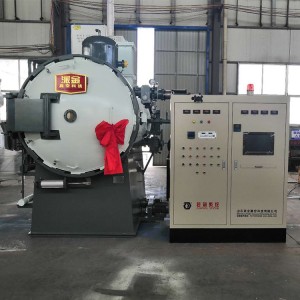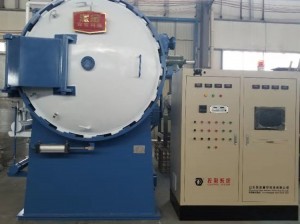Vacuum carburizing furnace
-

Horizontal double chambers carbonitriding and oil quenching furnace
Carbonitriding is a metallurgical surface modification technology, which is used to improve the surface hardness of metals and reduce wear.
In this process, the gap between carbon and nitrogen atoms diffuses into the metal, forming a sliding barrier, which increases the hardness and modulus near the surface. Carbonitriding is usually applied to low-carbon steels that are cheap and easy to process to give the surface properties of more expensive and difficult to process steel grades. The surface hardness of Carbonitriding parts ranges from 55 to 62 HRC.
-

low-pressure carburizing furnace with simulate and control system and gas quenching system
LPC: Low pressure carburizing
As a key technology to improve the surface hardness, fatigue strength, wear strength and service life of mechanical parts, vacuum low-pressure carburizing heat treatment is widely used in the surface hardening treatment of key components such as gears and bearings, which plays an important role in upgrading the quality of industrial products. Vacuum low-pressure carburizing has the characteristics of high efficiency, energy saving, green and intelligence, and has become the main carburizing method popularized in China’s heat treatment industry.
-

Vacuum carburizing furnace
Vacuum carburizing is to heat the workpiece in vacuum. When it reaches the temperature above the critical point, it will stay for a period of time, degass and remove the oxide film, and then pass in the purified carburizing gas for carburizing and diffusion. The carburizing temperature of vacuum carburizing is high, up to 1030 ℃, and the carburizing speed is fast. The surface activity of carburized parts is improved by degassing and deoxidizing. The subsequent diffusion speed is too high. Carburizing and diffusion are carried out repeatedly and alternately until the required surface concentration and depth are reached.